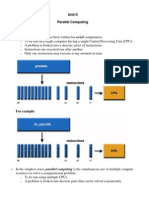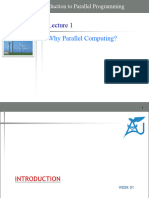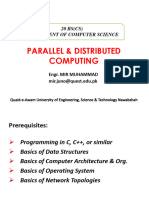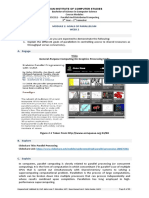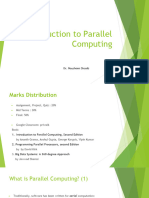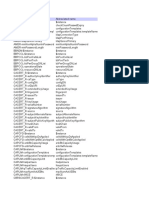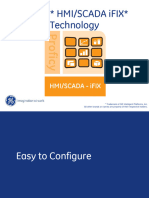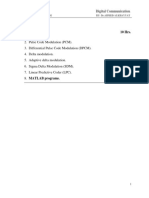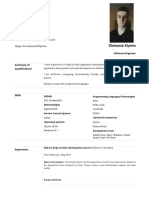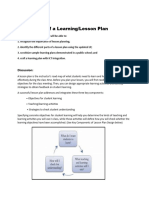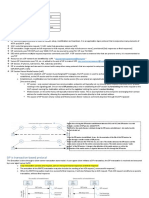0% found this document useful (0 votes)
14 views51 pagesL01 Introduction
The document provides an introduction to parallel computing, outlining its motivation, basic concepts, and challenges. It discusses the differences between serial and parallel computing, the importance of task decomposition, scheduling, and mapping, and the need for synchronization among tasks. Additionally, it highlights the evolution of computing and the necessity of parallelism to overcome limitations in serial processing.
Uploaded by
Vishnu PrasathCopyright
© © All Rights Reserved
We take content rights seriously. If you suspect this is your content, claim it here.
Available Formats
Download as PDF, TXT or read online on Scribd
0% found this document useful (0 votes)
14 views51 pagesL01 Introduction
The document provides an introduction to parallel computing, outlining its motivation, basic concepts, and challenges. It discusses the differences between serial and parallel computing, the importance of task decomposition, scheduling, and mapping, and the need for synchronization among tasks. Additionally, it highlights the evolution of computing and the necessity of parallelism to overcome limitations in serial processing.
Uploaded by
Vishnu PrasathCopyright
© © All Rights Reserved
We take content rights seriously. If you suspect this is your content, claim it here.
Available Formats
Download as PDF, TXT or read online on Scribd
/ 51













